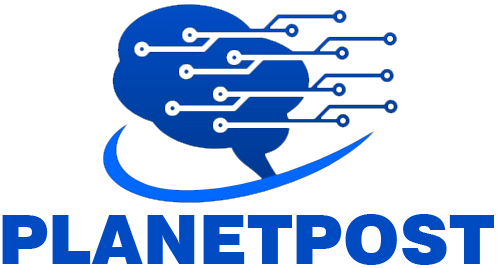Machine Learning Operations (MLOps) is a set of practices and principles that aim to unify the processes of developing, deploying, and maintaining machine learning models in production environments. It combines principles from DevOps, such as continuous integration, continuous delivery, and continuous monitoring, with the unique challenges of managing machine learning models and datasets.
As the adoption of machine learning in various industries continues to grow, the demand for robust MLOps tools has also increased. These tools help streamline the entire lifecycle of machine learning projects, from data preparation and model training to deployment and monitoring. In this comprehensive guide, we will explore some of the top MLOps tools available, including Weights & Biases, Comet, and others, along with their features, use cases, and code examples.
What is MLOps?
MLOps, or Machine Learning Operations, is a multidisciplinary field that combines the principles of ML, software engineering, and DevOps practices to streamline the deployment, monitoring, and maintenance of ML models in production environments. By establishing standardized workflows, automating repetitive tasks, and implementing robust monitoring and governance mechanisms, MLOps enables organizations to accelerate model development, improve deployment reliability, and maximize the value derived from ML initiatives.
Building and Maintaining ML Pipelines
While building any machine learning-based product or service, training and evaluating the model on a few real-world samples does not necessarily mean the end of your responsibilities. You need to make that model available to the end users, monitor it, and retrain it for better performance if needed. A traditional machine learning (ML) pipeline is a collection of various stages that include data collection, data preparation, model training and evaluation, hyperparameter tuning (if needed), model deployment and scaling, monitoring, security and compliance, and CI/CD.
A machine learning engineering team is responsible for working on the first four stages of the ML pipeline, while the last two stages fall under the responsibilities of the operations team. Since there is a clear delineation between the machine learning and operations teams for most organizations, effective collaboration and communication between the two teams are essential for the successful development, deployment, and maintenance of ML systems. This collaboration of ML and operations teams is what you call MLOps and focuses on streamlining the process of deploying the ML models to production, along with maintaining and monitoring them. Although MLOps is an abbreviation for ML and operations, don’t let it confuse you as it can allow collaborations among data scientists, DevOps engineers, and IT teams.
The core responsibility of MLOps is to facilitate effective collaboration among ML and operation teams to enhance the pace of model development and deployment with the help of continuous integration and development (CI/CD) practices complemented by monitoring, validation, and governance of ML models. Tools and software that facilitate automated CI/CD, easy development, deployment at scale, streamlining workflows, and enhancing collaboration are often referred to as MLOps tools. After a lot of research, I have curated a list of various MLOps tools that are used across some big tech giants like Netflix, Uber, DoorDash, LUSH, etc. We are going to discuss all of them later in this article.
Types of MLOps Tools
What is Weights & Biases?
Weights & Biases (W&B) is a popular machine learning experiment tracking and visualization platform that assists data scientists and ML practitioners in managing and analyzing their models with ease. It offers a suite of tools that support every step of the ML workflow, from project setup to model deployment.
Key Features of Weights & Biases
- Experiment Tracking and Logging: W&B allows users to log and track experiments, capturing essential information such as hyperparameters, model architecture, and dataset details. By logging these parameters, users can easily reproduce experiments and compare results, facilitating collaboration among team members.
import wandb
# Initialize W&B
wandb.init(project="my-project", entity="my-team")
# Log hyperparameters
config = wandb.config
config.learning_rate = 0.001
config.batch_size = 32
# Log metrics during training
wandb.log({"loss": 0.5, "accuracy": 0.92})
- Visualizations and Dashboards: W&B provides an interactive dashboard to visualize experiment results, making it easy to analyze trends, compare models, and identify areas for improvement. These visualizations include customizable charts, confusion matrices, and histograms. The dashboard can be shared with collaborators, enabling effective communication and knowledge sharing.
# Log confusion matrix
wandb.log({"confusion_matrix": wandb.plot.confusion_matrix(predictions, labels)})
# Log a custom chart
wandb.log({"chart": wandb.plot.line_series(x=[1, 2, 3], y=[[1, 2, 3], [4, 5, 6]])})
- Model Versioning and Comparison: With W&B, users can easily track and compare different versions of their models. This feature is particularly valuable when experimenting with different architectures, hyperparameters, or preprocessing techniques. By maintaining a history of models, users can identify the best-performing configurations and make data-driven decisions.
# Save model artifact
wandb.save("model.h5")
# Log multiple versions of a model
with wandb.init(project="my-project", entity="my-team"):
# Train and log model version 1
wandb.log({"accuracy": 0.85})
with wandb.init(project="my-project", entity="my-team"):
# Train and log model version 2
wandb.log({"accuracy": 0.92})
- Integration with Popular ML Frameworks: W&B seamlessly integrates with popular ML frameworks such as TensorFlow, PyTorch, and scikit-learn. It provides lightweight integrations that require minimal code modifications, allowing users to leverage W&B’s features without disrupting their existing workflows.
import wandb
import tensorflow as tf
# Initialize W&B and log metrics during training
wandb.init(project="my-project", entity="my-team")
wandb.tensorflow.log(tf.summary.scalar('loss', loss))
What is Comet?
Comet is a cloud-based machine learning platform where developers can track, compare, analyze, and optimize experiments. It is designed to be quick to install and easy to use, allowing users to start tracking their ML experiments with just a few lines of code, without relying on any specific library.
Key Features of Comet
- Custom Visualizations: Comet allows users to create custom visualizations for their experiments and data. Additionally, users can leverage community-provided visualizations on panels, enhancing their ability to analyze and interpret results.
- Real-time Monitoring: Comet provides real-time statistics and graphs about ongoing experiments, enabling users to monitor the progress and performance of their models as they train.
- Experiment Comparison: With Comet, users can easily compare their experiments, including code, metrics, predictions, insights, and more. This feature facilitates the identification of the best-performing models and configurations.
- Debugging and Error Tracking: Comet allows users to debug model errors, environment-specific errors, and other issues that may arise during the training and evaluation process.
- Model Monitoring: Comet enables users to monitor their models and receive notifications when issues or bugs occur, ensuring timely intervention and mitigation.
- Collaboration: Comet supports collaboration within teams and with business stakeholders, enabling seamless knowledge sharing and effective communication.
- Framework Integration: Comet can easily integrate with popular ML frameworks such as TensorFlow, PyTorch, and others, making it a versatile tool for different projects and use cases.
Choosing the Right MLOps Tool
When selecting an MLOps tool for your project, it’s essential to consider factors such as your team’s familiarity with specific frameworks, the project’s requirements, the complexity of the model(s), and the deployment environment. Some tools may be better suited for specific use cases or integrate more seamlessly with your existing infrastructure.
Additionally, it’s important to evaluate the tool’s documentation, community support, and the ease of setup and integration. A well-documented tool with an active community can significantly accelerate the learning curve and facilitate troubleshooting.
Best Practices for Effective MLOps
To maximize the benefits of MLOps tools and ensure successful model deployment and maintenance, it’s crucial to follow best practices. Here are some key considerations:
- Consistent Logging: Ensure that all relevant hyperparameters, metrics, and artifacts are consistently logged across experiments. This promotes reproducibility and facilitates effective comparison between different runs.
- Collaboration and Sharing: Leverage the collaboration features of MLOps tools to share experiments, visualizations, and insights with team members. This fosters knowledge exchange and improves overall project outcomes.
- Documentation and Notes: Maintain comprehensive documentation and notes within the MLOps tool to capture experiment details, observations, and insights. This helps in understanding past experiments and facilitates future iterations.
- Continuous Integration and Deployment (CI/CD): Implement CI/CD pipelines for your machine learning models to ensure automated testing, deployment, and monitoring. This streamlines the deployment process and reduces the risk of errors.
In this example, we initialize a W&B run, train a ResNet-18 model on an image classification task, and log the training loss at each step. We also save the trained model as an artifact using wandb.save(). W&B automatically tracks system metrics like GPU usage, and we can visualize the training progress, loss curves, and system metrics in the W&B dashboard.
Model Monitoring with Evidently
Evidently is a powerful tool for monitoring machine learning models in production. Here’s an example of how you can use it to monitor data drift and model performance:
import evidently
import pandas as pd
from evidently.model_monitoring import ModelMonitor
from evidently.model_monitoring.monitors import DataDriftMonitor, PerformanceMonitor
# Load reference data
ref_data = pd.read_csv("reference_data.csv")
# Load production data
prod_data = pd.read_csv("production_data.csv")
# Load model
model = load_model("model.pkl")
# Create data and performance monitors
data_monitor = DataDriftMonitor(ref_data)
perf_monitor = PerformanceMonitor(ref_data, model)
# Monitor data and performance
model_monitor = ModelMonitor(data_monitor, perf_monitor)
model_monitor.run(prod_data)
# Generate HTML report
model_monitor.report.save_html("model_monitoring_report.html")
In this example, we load reference and production data, as well as a trained model. We create instances of DataDriftMonitor and PerformanceMonitor to monitor data drift and model performance, respectively. We then run these monitors on the production data using ModelMonitor and generate an HTML report with the results.
Deployment with BentoML
BentoML simplifies the process of deploying and serving machine learning models. Here’s an example of how you can package and deploy a scikit-learn model using BentoML:
import bentoml
from bentoml.io import NumpyNdarray
from sklearn.linear_model import LogisticRegression
# Train model
clf = LogisticRegression()
clf.fit(X_train, y_train)
# Define BentoML service
class LogisticRegressionService(bentoml.BentoService):
@bentoml.api(input=NumpyNdarray(), batch=True)
def predict(self, input_data):
return self.artifacts.clf.predict(input_data)
@bentoml.artifacts([LogisticRegression.artifacts])
def pack(self, artifacts):
artifacts.clf = clf
# Package and save model
svc = bentoml.Service("logistic_regression", runners=[LogisticRegressionService()])
svc.pack().save()
# Deploy model
svc = LogisticRegressionService.load()
svc.start()
In this example, we train a scikit-learn LogisticRegression model and define a BentoML service to serve predictions. We then package the model and its artifacts using bentoml.Service and save it to disk. Finally, we load the saved model and start the BentoML service, making it available for serving predictions.
Conclusion
In the rapidly evolving field of machine learning, MLOps tools play a crucial role in streamlining the entire lifecycle of machine learning projects, from experimentation and development to deployment and monitoring. Tools like Weights & Biases, Comet, MLflow, Kubeflow, BentoML, and Evidently offer a range of features and capabilities to support various aspects of the MLOps workflow.
By leveraging these tools, data science teams can enhance collaboration, reproducibility, and efficiency, while ensuring the deployment of reliable and performant machine learning models in production environments. As the adoption of machine learning continues to grow across industries, the importance of MLOps tools and practices will only increase, driving innovation and enabling organizations to harness the full potential of artificial intelligence and machine learning technologies.



